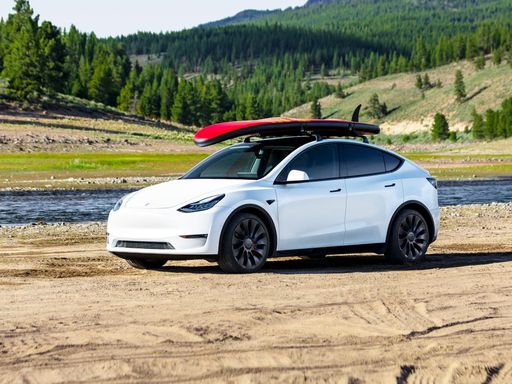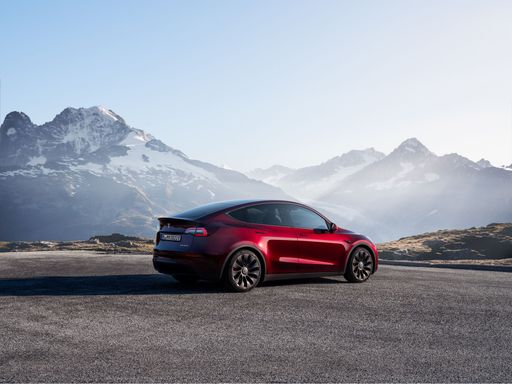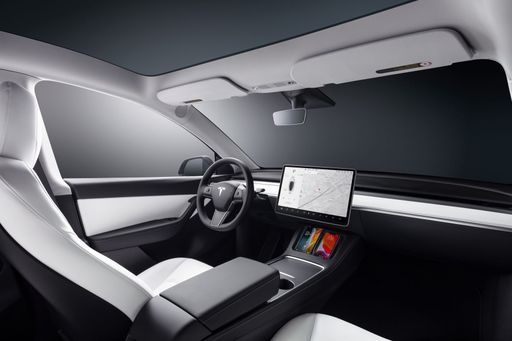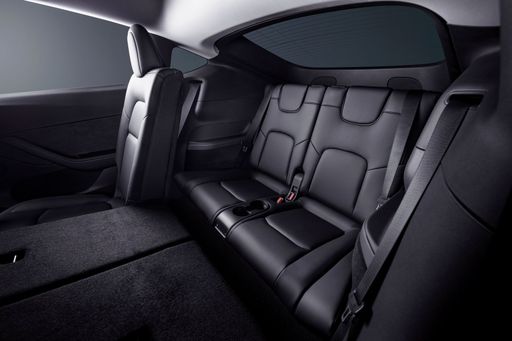Tesla Model Y vs ZEEKR 7X - Differences and prices compared
Costs and Efficiency:
Looking at overall running costs, both models reveal some interesting differences in everyday economy.
Tesla Model Y has a clearly perceptible advantage in terms of price – it starts at 34300 £, while the ZEEKR 7X costs 45400 £. That’s a price difference of around 11143 £.
In terms of energy consumption, the advantage goes to the Tesla Model Y: with 13.10 kWh per 100 km, it’s distinct more efficient than the ZEEKR 7X with 17.70 kWh. That’s a difference of about 4.60 kWh.
As for range, the Tesla Model Y performs barely noticeable better – achieving up to 622 km, about 7 km more than the ZEEKR 7X.
Engine and Performance:
Under the bonnet, it becomes clear which model is tuned for sportiness and which one takes the lead when you hit the accelerator.
When it comes to engine power, the ZEEKR 7X has a minimal edge – offering 646 HP compared to 627 HP. That’s roughly 19 HP more horsepower.
In acceleration from 0 to 100 km/h, the Tesla Model Y is hardly perceptible quicker – completing the sprint in 3.50 s, while the ZEEKR 7X takes 3.80 s. That’s about 0.30 s faster.
In terms of top speed, the Tesla Model Y performs to a small extent better – reaching 250 km/h, while the ZEEKR 7X tops out at 210 km/h. The difference is around 40 km/h.
There’s also a difference in torque: ZEEKR 7X pulls clearly perceptible stronger with 710 Nm compared to 493 Nm. That’s about 217 Nm difference.
Space and Everyday Use:
Whether family car or daily driver – which one offers more room, flexibility and comfort?
Seats: offers more seating capacity – vs .
In curb weight, Tesla Model Y is distinct lighter – 1976 kg compared to 2395 kg. The difference is around 419 kg.
In terms of boot space, the Tesla Model Y offers clearly perceptible more room – 822 L compared to 539 L. That’s a difference of about 283 L.
When it comes to payload, ZEEKR 7X hardly perceptible takes the win – 485 kg compared to 472 kg. That’s a difference of about 13 kg.
Who wins the race?
The Tesla Model Y proves to be wins the duel decisively and therefore becomes our DriveDuel Champion!
Tesla Model Y is the better all-rounder in this comparison.
 @ Tesla, Inc.
@ Tesla, Inc.
Tesla Model Y
Costs and Consumption
View detailed analysis
Engine and Performance
View detailed analysis
Dimensions and Body
View detailed analysis
Tesla Model Y
The Tesla Model Y blends SUV practicality with sports-car poke, wrapping a roomy, minimalist cabin and handy hatch into a slick, aerodynamic package that feels more Silicon Valley gadget than garage ornament. It’s an ideal pick for buyers who want effortless electric driving, regular software improvements and access to Tesla’s convenient charging network, though style-conscious shoppers should know it’s more about tech and efficiency than classic luxury.
details @ Tesla, Inc.
@ Tesla, Inc.
 @ Tesla, Inc.
@ Tesla, Inc.
 @ Tesla, Inc.
@ Tesla, Inc.
 @ Tesla, Inc.
@ Tesla, Inc.
ZEEKR 7X
The ZEEKR 7X is a striking entry into the electric vehicle market, blending sleek aesthetics with a promise of cutting-edge technology. Its design exudes modern luxury while offering advanced features tailored for tech-savvy drivers. Positioned as a competitor in the premium electric segment, the 7X aims to deliver a dynamic driving experience alongside eco-friendly credentials.
details
 @ Tesla, Inc.
@ Tesla, Inc.
|
|
|
|
|
Costs and Consumption |
|
|---|---|
|
Price
34300 - 53100 £
|
Price
45400 - 54000 £
|
|
Consumption L/100km
-
|
Consumption L/100km
-
|
|
Consumption kWh/100km
13.1 - 16.2 kWh
|
Consumption kWh/100km
17.7 - 19.9 kWh
|
|
Electric Range
534 - 622 km
|
Electric Range
480 - 615 km
|
|
Battery Capacity
64.5 - 85 kWh
|
Battery Capacity
-
|
|
co2
0 g/km
|
co2
0 g/km
|
|
Fuel tank capacity
-
|
Fuel tank capacity
-
|
Dimensions and Body |
|
|---|---|
|
Body Type
SUV
|
Body Type
SUV
|
|
Seats
5
|
Seats
5
|
|
Doors
5
|
Doors
5
|
|
Curb weight
1976 - 2108 kg
|
Curb weight
2395 - 2535 kg
|
|
Trunk capacity
822 L
|
Trunk capacity
539 L
|
|
Length
4790 - 4797 mm
|
Length
4787 mm
|
|
Width
1921 mm
|
Width
1930 mm
|
|
Height
1611 - 1624 mm
|
Height
1650 mm
|
|
Max trunk capacity
2022 - 2138 L
|
Max trunk capacity
-
|
|
Payload
440 - 472 kg
|
Payload
455 - 485 kg
|
Engine and Performance |
|
|---|---|
|
Engine Type
Electric
|
Engine Type
Electric
|
|
Transmission
Automatic
|
Transmission
Automatic
|
|
Transmission Detail
Reduction Gearbox
|
Transmission Detail
Reduction Gearbox
|
|
Drive Type
All-Wheel Drive, Rear-Wheel Drive
|
Drive Type
Rear-Wheel Drive, All-Wheel Drive
|
|
Power HP
299 - 627 HP
|
Power HP
421 - 646 HP
|
|
Acceleration 0-100km/h
3.5 - 7.2 s
|
Acceleration 0-100km/h
3.8 - 6 s
|
|
Max Speed
201 - 250 km/h
|
Max Speed
210 km/h
|
|
Torque
420 - 493 Nm
|
Torque
440 - 710 Nm
|
|
Number of Cylinders
-
|
Number of Cylinders
-
|
|
Power kW
220 - 461 kW
|
Power kW
310 - 475 kW
|
|
Engine capacity
-
|
Engine capacity
-
|
General |
|
|---|---|
|
Model Year
2025
|
Model Year
2025
|
|
CO2 Efficiency Class
A
|
CO2 Efficiency Class
A
|
|
Brand
Tesla
|
Brand
ZEEKR
|
Is the Tesla Model Y offered with different drivetrains?
The Tesla Model Y is offered with All-Wheel Drive or Rear-Wheel Drive.
The prices and data displayed are estimates based on German list prices and may vary by country. This information is not legally binding.
